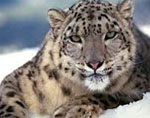|
Destination News |
|
|
|
|
|
|
India too in global effort to save snow
leopard habitat Thanks to camera trap imagery, Uttarakhand has been able to capture images of snow leopards in the higher reaches of Nanda Devi Biosphere, Gangotri National Park and, recently, in Bagheshwar Forest Division. Now, the state is set to be part of an international effort, Global Snow Leopard and Ecosystem Protection Programme (GSLEP), set up to conserve the habitat of these elusive cats. The snow leopard is a large cat native to the high Himalayas - it is a species of extremely low density occurrence, with each of the animals prowling about 1,000 sq km, thus extending far beyond national boundaries. Much of the habitat is spread across the Tibetan plateau. The 12 countries over which these creatures roam are Nepal, Bhutan, Pakistan, Afghanistan, Kyrgyzstan, China, Mongolia, India, Tajikistan, Uzbekistan, Russia and Kazakhstan. Any conservation effort, therefore, will also be one of trans-border cooperation. Representatives of GEF also recently met officials of the Union ministry of environment and forests for proper dovetailing of funding so work undertaken under different projects do not overlap. The snow leopard is listed on the IUCN Red List of endangered species. In 2003, it was estimated that there were only about 6,000 individuals of the species in the wild in the world; of these, only about 2,500 would reproduce. In India, there are four other states with populations of snow leopards - Himachal Pradesh, Arunachal Pradesh, Jammu and Kashmir and Sikkim. The Uttarakhand wildlife department and the Wildlife Institute of India had, in January this year, prepared a proposal for the conservation of snow leopards and their habitat, but it received no funding from the Centre. It is thus heartening that international agencies have now stepped in to fill this gap. WII is set to collect information from the five Indian states with snow leopard habitat. This will then be circulated to the range countries to embark on a management plan to ensure conservation of key biodiversity and effective management of protected areas. For proper convergence of the GEF and GSLEP initiatives, a dialogue has begun between all implementing agencies. |
